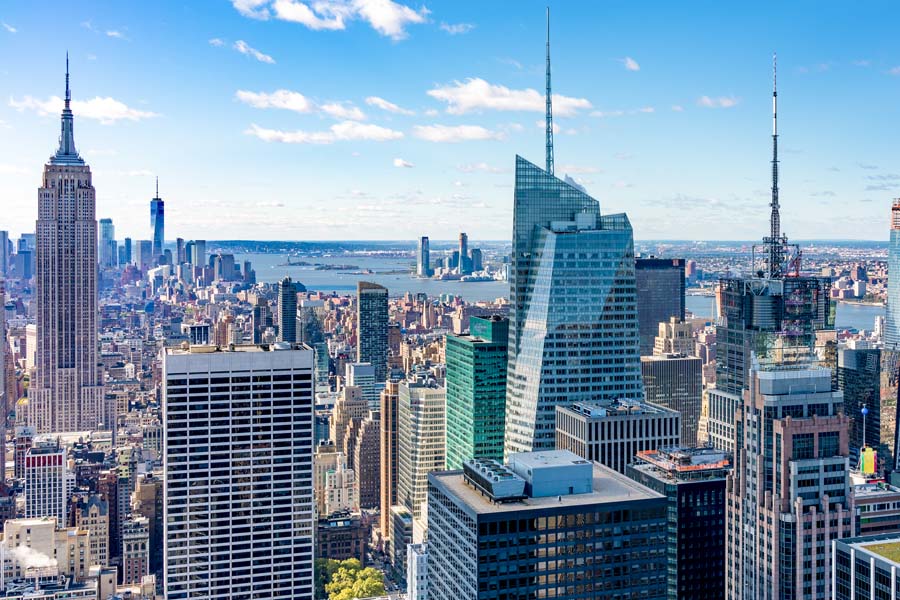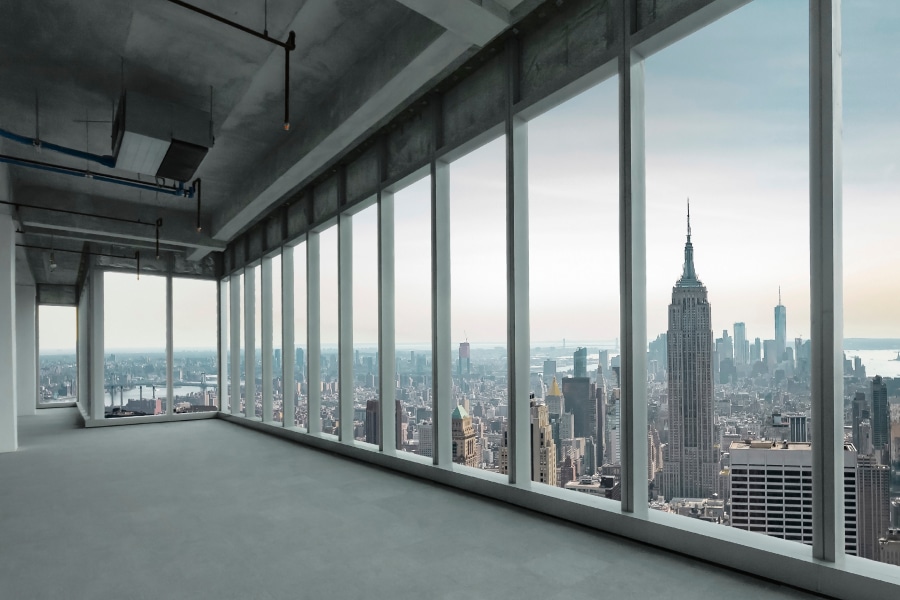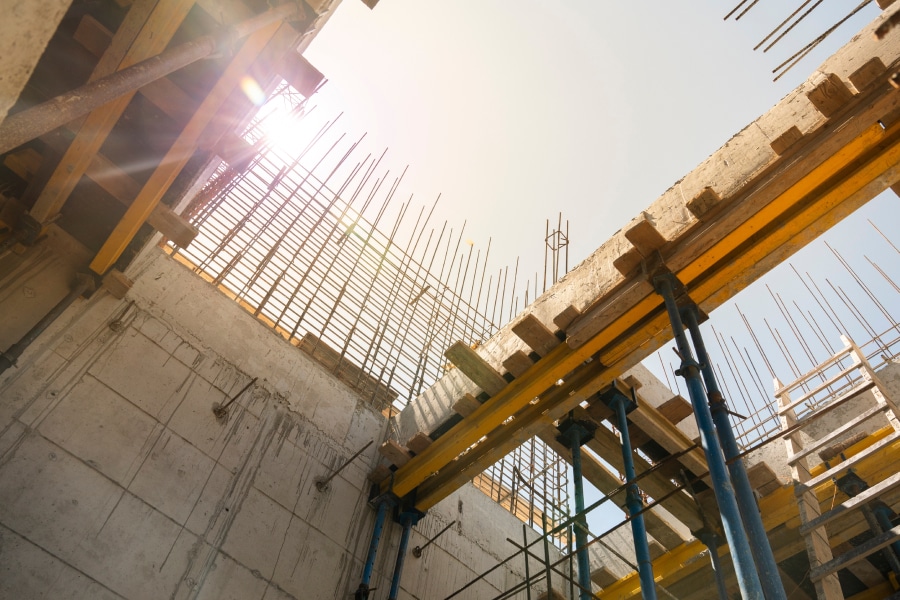If you’ve spent time in the downtown business district of almost any US city in the past three years, you may be familiar with one thing: near silence.
Well, not exactly silence. But few would disagree that cities in general have lost some luster in recent years.
Prior to the COVID-19 pandemic in 2020, throngs of coffee-toting, earphone-wearing commuters would pour out of public transit systems en route to their offices, fueling cities and their local businesses with waves of energy and activity that, in the past decade, rejuvenated many previously downtrodden downtowns.
Today, that energy and commotion is a shell of what it was. The spike in post-pandemic remote work—some of which has become permanent—has muted such energy, and cities are starting to feel it. Many are beginning to take action that they hope will help reimagine—and re-energize—city centers so people have more reasons to spend time there besides going to work.
New York City is one of those municipalities, and in May 2022, officials there decided to do something about it. Led by Gov. Kathy Hochul and Mayor Eric Adams, a group of 59 civic leaders and industry experts assembled the “’New’ New York Panel.
The group convened frequently in recent months to identify new opportunities for improving the city with an eye toward making its business districts better suited to this post-pandemic world. What comes from the effort may have a big impact on local construction in the years ahead, as the panel aims to make proposals that could call for land redevelopment and building conversions.
RELATED: How the Empire State Building’s Construction Remains a Wonder
The process so far has revealed a much larger opportunity than to just breathe life into commercial hubs abandoned by remote workers.
“While our initial charge was to revive business districts, we realized we needed to look at solving a wider range of challenges faced by all New Yorkers,” said Julie Stein, the panel’s executive director. “The plan addresses fundamental questions around transportation, housing, public space and access to childcare.”
“The plan,” or the panel’s 159-page report, “Making New York Work for Everyone,” was released in December 2022. It lays out 40 improvement proposals, with suggestions including improvements to public transit systems, creating a network of public spaces through Midtown Manhattan, the city’s main office district, and updating zoning to increase the number of housing units.
“New York’s success over the centuries has really been defined by our ability to adapt and convert crises into opportunity,” she said. “As one example, the city reinventing itself as a 21st century city after the 9/11 attacks, both by reimagining Lower Manhattan as a mixed-use community, but also transforming underutilized portions of the waterfront and diversifying the economy in terms of both sectors and certain geographic locations.”
Implications for architecture, construction
Implementation, Stein said, is “moving full steam ahead” as of January 2023, with regulatory processes underway at the city and state level to greenlight projects. But what does this mean for those companies and individuals who may be designing and building such improvements?
“The vision of making New York the best place to work no matter what you do includes a package of actions, and a lot of them are focused on the built environment of the city—landscape and infrastructure,” Stein said. “If we want our business districts to be more mixed-use, we will need to redevelop outdated office spaces into other things, including housing.”
Green building and retrofits are top of mind for the panel, Stein added, as are instituting sidewalk shed reforms, public space maintenance and protected bikeway infrastructure. While all of these initiatives sound promising to the architecture and construction industries, there are yet to be hard-and-fast timelines—something likely to come later.
Top three goals
Each of the 40 proposals laid out in the plan fall into one of three categories:
To “reimagine New York’s business districts as vibrant 24/7 destinations”: “This is about shedding the ideas of single-use districts and supporting Midtown in particular and it’s evolution into a great place where people not only work, but also live and play,” Stein said. “We have a suite of recommendations that talk about making live/work/play districts in Midtown and business districts throughout the city.”
Some of those strategies include investing in permanent public spaces and improving quality of life issues, like sustainability and cleanliness, across business districts.
To “make it easier for New Yorkers to get to work”: “This is about making sure we can improve commutes into New York City and strengthening employment hubs and workspaces in all five boroughs, if people want to work closer to home,” Stein said. “Work-from-home is a great option, but not everyone has space in their New York City apartment. One of our recommendations is the acceleration of modernization of libraries to become workspaces in low-cost ways.”
To “generate inclusive, future-focused growth”: The last goal includes strategies for establishing New York City as a hub for innovation, increased access to housing (specifically, 500,000 new housing units over the next decade) and trying to ensure that growth and access to opportunity is fair for all residents.
What this means for other big cities
New York City isn’t the only place where whispers of post-pandemic, city-wide improvements are at the forefront. News stories abound with chatter of previously busy business districts now bare and what that may mean for the future of cities.
“We are getting outreach from cities across the country who want to learn, and we are benefiting from others who have their own ideas for their cities,” Stein said. “Every city has different challenges. New York City is unique because we don’t have one traditional downtown.”
Stein hopes the nuanced lessons in the report help to inform a path forward for city improvements nationwide. “There are interconnected actions that can be taken from public and private standpoints to help with transportation, making childcare more affordable, reducing barriers to labor force participation and looking at broader workforce development systems,” Stein said. “What I hope to convey is a more complex thinking of what economic development is.”












